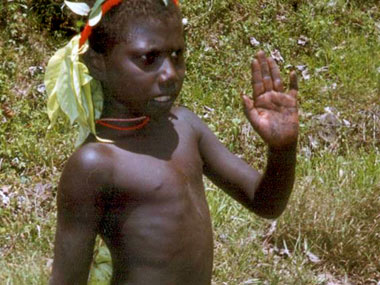No more tourist or commercial activities will be permitted within five kilometres of the reserved area inhabited by aborginal tribes like the Jarawas in the Andamans as part of the government’s attempt to protect them from exploitation and intrusions from tourists.
“Tourist establishments would be prohibited and other commercial activity would be regulated in the buffer zone to protect the aboriginal tribes from undesirable influence,” Information and Broadcasting Minister Ambika Soni told reporters today after the cabinet meeting.
Violations of the five km buffer zone will invite a penalty like three to seven years of jail and a fine of Rs.10,000 which could act as a deterrent to unauthorised entries, she said.
She said the government would promulgate the Andaman and Nicobar Islands (Protection of Aboriginal Tribes) Amendment Regulation 2012 under article 240 of the constitution.
The amendment will cover the entire Union territory of Andaman and Nicobar Islands.
The decision comes after the union territory’s administration had initially declared a five kilometre radius around the Jarawa Tribal Reserve a buffer zone and prohibited any commercial and tourist activities within it.
However, the decision was challenged and the Calcutta High court and the court quashed the notification saying that the existing law only permitted creation of a reserved area but nothing about creating a buffer zone.
The administration has filed an appeal before the Supreme Court and the case is still subjudice. The cabinet’s decision could also be a reaction to a repulsive video in which topless Jarawa women and men were shown dancing in return for food and other items.
During a recent hearing in the Supreme Court, the government said it was considering building a sea link to ferry tourists from north Andaman to the southern Baratang Island housing limestone cave and mud volcanoes to prevent tourists from using the Andaman Trunk Road.
The Centre proposed a ban on resorts, hotels and other commercial establishments being set up near the reserved area since it raised the risk of tourists wandering off and running into tribals. However, it did not have any such reservations against government establishments.
Almost 200 vehicles are allowed presently use the Andaman Trunk Road. The road , a 46-long stretch that links north and south of Andaman, is often suspected to be the main means for tourists to make contact with Jarawa settlements.
The island’s administration had reportedly ruled out shutting the road since there is no alternate supply route into the Middle and North Andamans and despite the plan .
Given the road has been used for decades, some have pointed to the fact that it isn’t unusual for the tribals to make their way into the villages surrounding their reserve for food and other items. With a rapidly dwindling Jarawa population they have argued it is time for them to be gradually assimilated into our society and they should be allowed to choose how it should be done.
But given the government has decided to isolate them, it perhaps needs a more concrete solution for the Jarawas rather than just creating a buffer zone for the tribal population when a major road runs right through their settlement.


)
)
)
)
)
)
)
)
)



